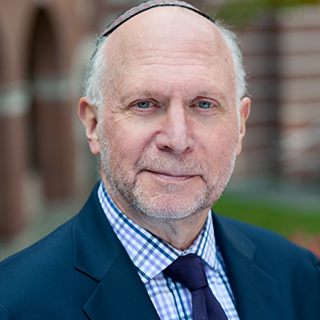The Butchers

“The animal was stripped. The men began to divide her into pieces, cutting off her head and her legs. One butcher couldn’t restrain himself. He took the fat liver and put it on the hot coals that been placed in the corner. When the blood reached the flames, everyone ate it without proper salting and with ravenous hunger, licking their fingers eagerly. A large bottle of brew was ready so they ate and drank until they satisfied their lust. They were like priests of Ba’al when the sacrifice was on the altar. But this did not happen at Beth El or at Dan; it happened in the Jewish city of Dashia, not at the time when the ten tribes were exiled from the Northern Kingdom, but in the year 1884.”
“נפשטה הבהמה, החלו האנשים לחלק אותה לחלקים, לחתוך את ראשה, את רגליה. קצב אחד לא יכול לעצור רוחו, ויקח את הכבד השמן וישטחהו על גבי גחלים בוערות, ששמו אחרים בפינה. ובבוא הדם באש אכלו אותו כולם בלי מליחה ובתאוה עזה נמרצה וילוקו את אצבעותיהם בחמדה. ובקבוק גדול של יי”ש היה עומד מוכן על הקרקע וישתו ויאכלו מלוא תאותם. ככוהני-הבעל בשעתם היו האנשים האלה בשעה ההיא, בהיחָלק הקרבן לפני המזבח והדבר לא היה בבית-אל או בדן, כי אם בעיר היהודיה דשיה, לא לפני גלוֹת עשרת השבטים נעשה הדבר, בממלכת ישראל הצפונית, כי אם בשנת חמשת אלפים שש מאות ארבעים וחמש ליצירה. . . ”
—”The Red Heifer” by Micha Josef Berdichevsky (Translation by William Cutter)
The ritual of the red heifer (Num. 19) has always fascinated readers. Not only is it elaborate and mysterious, it is also based on a rarity: a red cow. The paradoxes and power of this passage attracted the attention of modern Hebrew writers. Set in Eastern Europe, “The Red Heifer” tells the story of butchers who steal a beautiful and vigorous cow, butcher it without a shoḥet (a ritual slaughterer), and sell the meat as kosher. The centerpiece of the story is a gruesome, blow-by-blow description of the slaughter, the great animal quivering and gushing blood.
Why is Berdichevsky writing this story? We can take guidance from the divided narrator. On the one hand, he views the theft and slaughter with horror and judgment. He also assures us that all of the butchers came to a bad end. On the other, the narrator is transfixed by the fact that there exist, in the depth of the Diaspora, Jews who are muscular and powerful and not afraid to use force. If the butchers’ knives were used for deceit, he notes that when faced with the perpetrators of pogroms, these same weapons were wielded to protect Jewish lives.
Most important, the narrator makes the connection with the pagan sacrificial cult of ancient Israel. Berdichevsky bemoaned the fact that over the millennia, the Rabbis suppressed the vitalistic energy that had once been part of Israel’s prehistory. He did not extol paganism, but he did offer a barbed critique of the over-intellectualized regime of normative Judaism and urged modern Jewish culture to recover the primitive in neglected or suppressed traditions. His critique was adopted by the nascent Zionist movement in its assessment of Diaspora Jewish life and became a fundamental tenet of the return to the body and to the Land.
The attitude of many modern Jews to the sacrificial ritual is similarly divided. We understand that the biblical sacrifices were an advance on the pagan cults they replaced; we appreciate them in their context, but we do not wish to resume their practice. We are enlightened people. Nevertheless, like the narrator of Berdichevsky’s story, we cannot help being fascinated by the primordial power of the red heifer.



